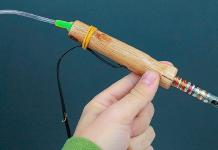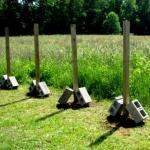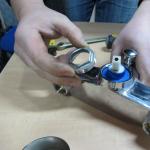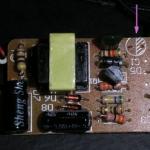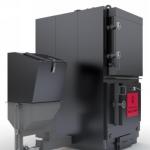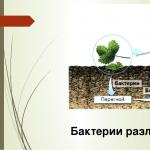Snapdragon, or antirrinum, is one of the most beloved garden flowers in Europe. Gardeners are attracted by everything: a variety of colors, the ability to choose the right size for decorating flower beds and rabatok, the originality of the flower shape, the presence of terry varieties, unpretentiousness and long flowering time, excellent compatibility with other ornamental plants and flowers.
History of snapdragon
Snapdragon has been known since antiquity. Mention of him is already found in ancient Greek myths in the cycle of the exploits of Hercules. The myth of the Nemean lion tells how this hero defeated a terrible lion who lived near the city of Nemea and abducted children and animals. The goddess Flora, admiring the feat of Hercules, created in memory of this event an amazing flower, similar to the mouth of a lion. She gave him the appropriate name - snapdragon.
In the wild, snapdragons are ubiquitous on the North American continent, in Europe, in North Africa. Especially a lot of it grows in the Mediterranean. About 50 species of wild snapdragon are known. We often find wild flaxseed, a kind of snapdragon, in Central Russia and Siberia. North America and Southern Europe are considered its homeland.
It appeared in the gardens in the 16th century, and already in 1567, one of the books mentions antirrinum large - the only cultivated species of snapdragon.
Flower growers in Germany were the first to become interested in this flower. They began breeding work, then these experiments were actively continued by their colleagues from almost all European countries. And as a result, there are already about 1000 varieties of snapdragon.
flower name
In many countries, this plant has been given its own name. The French call it "Wolf's Mouth", the British - "Biting Dragon", the Ukrainians - "Sponges".

The shape of the flower is very peculiar - it resembles two lips. If you lightly press the flower at the base, then the upper lip will begin to rise, as if the mouth of a lion will open. Hence its main name. True, in most regions of Russia it is called the Dog, because the flower, due to its size, resembles a funny muzzle of a dog rather than a formidable mouth of a lion.
Botanical description of the snapdragon plant
Snapdragon is a perennial plant. In countries with cold winters, in northern Russia and Scandinavia, it grows as an annual. The plant is a highly branching shrub with a pyramidal shape or a single stem. The leaves are lanceolate in shape. They are dark and light green.

The flowers are collected in very long inflorescences, from 5 to 60 cm, in many varieties they have, like the stem, the shape of a pyramid. First, the lower flowers bloom, then the flowering goes up. Each new pair of flowers opens about a week after the previous one. They last for two weeks. The entire inflorescence blooms for about 3-4 months.
The coloration of the snapdragon is incredibly diverse. It has almost all tones and shades. There are bicolor and tricolor varieties of flowers. Snapdragon does not have only black color and blue and blue tones and shades. Most often there are pink, white, lilac and yellow tones. Quite rare green and light green ones are also popular.
The fruit is a multi-seeded capsule, which can contain from 5000 to 8000 seeds.
The most popular snapdragon varieties, mixes and flower photos









Breeders have bred a large number of varieties. The following are especially known today:
- Madama Butterfly- refers to medium-sized varieties, flowers are terry, bright, of all existing tones, large, collected in dense tall brushes;
- Rainbow- grows up to 40 cm, is distinguished by an abundance of flowers of all shades;
- scarlett- bushes grow up to 60 cm, juicy red flowers are collected in high pyramidal brushes, it goes well with perennials, easily tolerates frosts;
- Tom Thumb- original dwarf variety with delicate pastel shades of flowers;
- Russian size- intended mainly for cutting, grows up to 160 cm in height, flowers are very large, two or three shades, dense inflorescences;
- Lampion F1- a unique ampelous variety for hanging planters and balcony boxes, the leaves are dark, they come with a silvery tint;
- Black Leaf- compact bushes with a variety of flower colors and dark, almost black leaves.

Snapdragon has a large number of varieties
Various mixes are also popular - sets of seeds with different colors or different shades. flowers. Most varieties have several color options. They are sold both in the form of mixes, and each option separately. So, for example, snapdragon Tall, which has excellent decorative qualities, is packed separately by color. These are monophonic flowers - red, white, yellow.
Snapdragon dwarf is both monochromatic and two-color. In this case, you can purchase bags of seeds of the same color and a mixture. The choice depends on the goal. So, for large loggias, where there are several boxes with snapdragons, it is better to plant flowers of a certain color in each box, and for small balconies where more than one box cannot be installed, a mix is more suitable. It is also preferable if the snapdragon grows in boxes with other flowers.
Snapdragon classification

Snapdragon is classified according to the height and duration of flowering
Snapdragons are classified by height and duration of flowering.
According to the height of the bush, plants are:
- giants, up to 160 cm, are grown for bouquets and creating a background for other plants in group plantings, they need a garter;
- high, up to 120 cm tall; they, as a rule, branch weakly, the inflorescences are dense, large, they begin to bloom in the second half of July, they are mainly bouquet varieties;
- medium, up to 60 cm; branch well, inflorescences are not lower than in high varieties, but the density of flowers is less, they bloom already in June;
- low, up to 40 cm; flowering is active, inflorescences are loose, but individual flowers are very large;
- dwarf, up to 20 cm, branch strongly, inflorescences are low and small branches, bloom from early summer to frost, it is these plants that have the most incredible colors.
The division by flowering time is traditional, like all flowers:
- early flowering, the first flowers open in June;
- medium, not earlier than the beginning of July;
- late, flowers appear closer to August.
Growing snapdragons in seedling and seedless way

I mainly grow snapdragons with seedlings, but it is possible without seedlings
Snapdragon is grown mainly through seedlings. It should be borne in mind that the higher the plants, the longer they grow before flowering. So, high-grade snapdragons are sown at the end of February, medium and low varieties in March, and dwarf snapdragons will have time to grow even if they are sown in mid-April.
The seeds are so small that they are not buried, but simply scattered evenly over the surface. soil after moisturizing it well. It is better if it is garden soil with the addition of coarse sand. To spread the seeds more evenly, they can first be mixed with wet sand, and then put this mixture on the ground. With any planting option, it is worth slightly moistening the seeds spread on the surface from the spray gun.
The container is covered with glass or film so that the soil does not dry out quickly. The condensate that accumulates on the film and glass has to be constantly removed, the seedlings must be ventilated frequently. The optimum temperature for seed germination is 20-22 degrees.
Shoots begin to appear after about 10 days. They should immediately be put on a sunny window. The less sun the seedlings receive, the poorer the flowering of adult plants will be. But from the bright midday sun, seedlings should be shaded.
After 20-25 days, the grown seedlings are planted in large boxes or in peat pots. At the same time, be careful not to damage the roots. It is best to dig up the plant with as much soil as possible. After seven days, you can make the first top dressing. To do this, take any complex fertilizer for flowering plants.
Plants that have reached 10 cm are pinched over the fifth leaf to get more lush flowering. This is done only for tall and medium plants.
Snapdragon can also be grown in a seedless way. In this case, the seeds are sown in early May directly into the ground. But only dwarf, undersized and medium-sized varieties can be grown this way. They will begin to bloom somewhat later grown through seedlings.
Snapdragon can also reproduce by self-sowing. If the winter was mild and snowy, and the plants of the previous year were not destroyed, then they can overwinter under the snow and start growing in early spring. In this case, large lush, abundantly flowering bushes are obtained.
Care of snapdragons in the open field

Before planting a snapdragon, the bed is fertilized with manure and humus
In open ground, snapdragons begin to be planted in mid-May. Even if at this time a slight frost occurs, up to 3-4 degrees, the plants will endure it.
Pre-prepare the bed, make humus, a small amount of organic fertilizers and peat. The earth should be light, nutritious. Snapdragon prefers the sun, but also grows in partial shade. But he does not like damp, poorly drained places.
Tall plants are planted at a distance of 40-50 cm from each other, medium-sized 30-35 cm, undersized after 20 cm, and dwarf plants after 15 cm. Seedlings should be planted in well-moistened soil.
Care for snapdragon plantings during the summer is as follows:
- watering in dry weather;
- regular weeding;
- fertilizing, for example, nitrophoska or complex fertilizers, every two weeks;
- in case the flowering has noticeably decreased, then it is worth cutting the plants a little to provoke a new wave of flowering;
- constantly monitor the condition of plants and, if necessary, start the fight against diseases and pests in time.
Snapdragons can bloom almost until October if there is no severe frost.
Diseases and pests of snapdragon

For the snapdragon flower, not only caterpillars are dangerous, but also many other insects.
The plant can be affected by septoria, gray rot, black leg, rust. It is very difficult to cure a plant, and besides, it takes a lot of time: the plant will stop flowering during an illness and will not have time to fully bloom again. That's why affected plants uprooted from the ground and burned. I treat the place where they grew with a fungicide.
For snapdragons, insects are dangerous, which can lay eggs in the flower or leaf axils. These are different flies, caterpillars, butterflies, scale insects. In order not to lose plants, the following rules must be observed:
- plant seedlings not too close to each other,
- promptly remove affected specimens,
- avoid waterlogging of the soil,
- water under the root, trying not to get water on the leaves.
After flowering, the site is dug up, before that, the plants are pulled out and burned to destroy possible pests.
Collection of snapdragon seeds
Seeds are harvested when they are not yet fully ripe. To collect, take a long paper bag. On the selected plant, cut off the top, where the fruits are just beginning to ripen. Then a bag is put on the remaining stem, tied below the fruit and the stem is cut off. The bag is turned over and hung in a dry, well-ventilated area so that the seeds ripen. When ripe, the seeds spill out of the boxes into the bag. Then they are laid out in bags or in a box and stored until spring. It is better if this happens at a temperature of 5-10 degrees Celsius, in a dry room.
Using snapdragons to decorate gardens and balconies

Snapdragon is used to dock balconies, gardens, borders and more
Low-growing varieties are widely used for borders. At the same time, plants are planted both in the same shade and in a variety of tones. Medium-sized varieties look good in flowerbeds in the second - third row. Tall ones can be a background for other plants.
Besides, tall snapdragon - a wonderful flower for creating bouquets. It stands in the cut for up to two weeks.
Plants of any height are used to create separate groups in flowerbeds and flowerbeds. Snapdragon is combined with chrysanthemums: bright snapdragon flowers against white chrysanthemums look great. Groups of snapdragons successfully alternate with cinennaria, sea alissum.
Snapdragon looks good in plantings, where kosmeya, cornflowers, clarkia, escholcia grow interspersed. Landings are original when a medium-sized snapdragon is the center of the composition, and lower ageratums, alissums are planted around it.
This plant is suitable for mixborders and flowerpots in front of buildings and next to bushes in alleys.
Snapdragon is used to decorate terraces, porches. Dwarf and undersized varieties are grown for balcony boxes, they are planted in pots. Now there are ampelous varieties that perfectly decorate balconies.
Snapdragon is planted in pots for decorating rooms. For this, not only undersized varieties are used, but also medium and tall ones. They will bloom for a long time, given that they are perennials and the rooms are warm. You can save plants in pots in winter, creating certain conditions for them - the temperature is not higher than 15 degrees.
Medicinal properties of snapdragon
In Germany, since ancient times, it was believed that this plant scares away black forces, and it was dried and worn in medallions on the chest. In the countries of the East, it was used as an effective antidote for poisoning with many poisons.
In folk medicine, it is used for liver diseases and intestinal discomfort. In industry, snapdragon juice is used in ointments and cosmetic creams.
In conclusion, I would like to draw your attention to the video material, in which you will clearly see how to plant snapdragons in open ground, we wish you a pleasant viewing.
Snapdragon or antirrinum belongs to herbaceous or semi-shrub plants of the Plantain family (formerly belonged to the Norichnikov family). Flowers snapdragons amaze the imagination with their beauty and variety of colors. Serves as an irreplaceable decoration balconies , loggias And garden plots. They delight with their flowering all summer and until mid-autumn.
Strongly branched or single-stemmed plants with dense foliage can reach a height of 20-80 cm. Their taproot, branched roots penetrate deep into the soil. Snapdragon is a perennial. Blooms until late autumn. In warmer regions it is adapted to overwintering in open ground. In spring, the plant produces young sprouts and blooms until frost.
These flowers can also be grown as annuals. Snapdragon in this case is pulled out of the soil in late autumn, and its seeds are stored until spring sowing. About 50 species of this plant are cultivated.
Species and varieties
The very first in the 19th century, German scientists were engaged in the selection of snapdragons or antirrinum. To date, a huge number of varieties have already been bred, classified mainly by plant height:
- 80 cm - high (cut);
- 40-60 cm - semi-high (universal);
- 25-40 cm - low;
- 15-20 cm - dwarf.
Tall or cut flowers are mainly used to create bouquets that can last up to 10 days in water. This group includes the following types:
- "Alaska"- has greenish-white flowers
- "Anna German"- with light pink shades of inflorescences
- "Canary"- has bright yellow flowers
- "Rocket Orchid" And "Rocket Lemon"- flowers of lilac and pale lemon shades
- "Arthur"- large cherry blossoms
- "Goshenka"- orange
- "Swallowtail"- flowers of two colors: raspberry and yellow
The main shoots of semi-high varieties of antirrinums rise above the shoots of the second order. These types include:
- Golden Monarch
- White Monarch
- Scarie Monarch
- Ruby
- Lipstick Silver
- Tequila Sunrise
Low, as well as dwarf varieties are represented by the following species:
- Floral Showers
- Tip Top
- Magic Carpet
- Tom Thumb
- Kimozi
- Chimes
- hobbit and many others
In dwarf varieties, dense and short inflorescences have a flattened shape. Dwarf snapdragons bloom more profusely than undersized varieties.
A species called "Ruby Star" has appeared recently. It has cherry blossoms. Snapdragon ampelous, called "Lampion", bred for. It is great for hanging baskets.
reproduction
The plant is propagated by seeds or cuttings. The second option is used quite rarely, only for breeding some terry forms. Therefore, growing snapdragons from seeds is the most popular, easy and affordable way.
In warm climates, snapdragons can be sown outdoors in early spring. Seeds are sown in well-moistened soil, sprinkled with a thin layer of earth and covered with a film. To ventilate the seedlings, the film must be removed daily for a while. Snapdragon seeds can not be poured, excess moisture is detrimental to them.
In more severe climatic conditions, snapdragon seedlings are grown at home or in greenhouses. At home, flower containers are used for this, in which seeds are sown in early spring. They germinate in 3-4 weeks at a temperature of 22-25°C.
For the substrate, a mixture of peat, garden soil and humus is used. All components are taken in equal quantities. Seeds spill well and are covered with a film or glass jar. When the first shoots appear, the coating is removed. Planting snapdragons in the ground is carried out in the middle of May. For better adaptation, seedling boxes should be left outdoors for a few days before planting.
Snapdragon. Landing and care
Although this plant is unpretentious, it grows better and develops well in places well lit by the sun and in fertilized soils. The soil is prepared a week before planting snapdragons in the ground. To do this, for each square meter of the site selected for planting, you must make:
- 200 grams of wood ash;
- 3 kg of humus or compost;
- one tablespoon of nitrophoska.
The soil with additives is dug up and levelled. Snapdragon seedlings are best planted on a cloudy day. Young shoots planted in sunny weather do not take root well. The distance between seedlings is 25-30 cm. The soil must be loosened during the entire summer period and weeds must be removed from it.
Watering and feeding
It will take about two weeks for the seedlings to take root. After that, the first feeding of the plant with organic fertilizer is carried out. This may be nitrophoska or other fertilizer, which contains the trace element boron.
Snapdragon flowers need constant watering, but excess moisture can kill the plant. Therefore, it is better to water the antirrinum as the soil dries. And to maintain the required level of moisture, you can mulch the soil with freshly cut grass or humus.
- a perennial herbaceous plant with large green stems of the Plantain family, which we grow as an annual. The plant forms many stems. Snapdragon stems are straight, branched, of various heights: there are undersized varieties, only about 20 cm, and there are tall ones, up to one meter high, which form pyramidal bushes during the growing season. Snapdragon leaves are elongated, lanceolate or slightly oval green in color, pubescent with thin villi.
Flowers at snapdragon large, irregularly shaped, two-lipped, resembling a gaping lion's mouth, pubescent on the outside. There are varieties with simple and double flowers. The flowers are collected in racemose inflorescences. Coloring of snapdragon flowers will be able to please you with a wide range of colors: they are white, pink, yellow and two-tone. In the wild, there are species of snapdragon with yellow, blue, purple flowers.
The plant is native to North America. In Russia, snapdragon has long been popular and is a very common garden plant that adorns flower beds and flower beds. Snapdragon is a wonderful sunny annual that will fill your garden with a pleasant fragrant aroma, attract not only bees, but also butterflies.








Growing snapdragons from seeds
Sowing snapdragon seeds for seedlings can be done from the end of February, in March, to the beginning of April. snapdragon seeds when sowing, lightly sprinkle with earth. The first shoots begin to appear after ten days, however, the germination of snapdragon seeds can take up to a whole month. For better germination, cover the container with snapdragon seeds with a glass or plastic bag. As soon as shoots begin to appear, the film or glass must be removed. For better germination, keep a container with snapdragon seeds at an air temperature of at least +18 ° C. Snapdragon seeds can be sown immediately in open ground in May, covering the bed with a film or agrospan.
For the first time after the germination of the snapdragon, monitor soil moisture: overdrying, as well as severe waterlogging of the soil, can lead to the death of seedlings. Transplantation of snapdragon seedlings do not put it off for a long time: it must be carried out at the stage of the first two or three true leaves. When the snapdragon seedlings grow to 4-6 pairs of true leaves, the tops of the plants should be pinched to form additional stems.








Care of snapdragons in the open field
In open ground snapdragon seedlings planted already partially blooming in late May - early June, when the threat of frost has passed, leaving 30 cm between plants. Snapdragon grows best in open sunny places. If you have no open sunny places left at all, snapdragons can be planted in partial shade. Only the flowering will be a little delayed, it will not be too abundant, the color of the flowers will be softer, and not as bright as in the open sun.
Soil for snapdragons should be well fertilized. If you have clay soil on the site, add more organic matter, peat, peat, sand to it in order to make the soil looser and eliminate excess moisture stagnation. If your site has sandy soil, add black soil, rotted organic matter, leafy soil, try to improve the soil structure so that it can retain water and stay moist longer.
Don't forget to water the snapdragon. The next watering is carried out no earlier than the topsoil dries out. To preserve precious moisture, mulch the snapdragon plantings with a layer of freshly cut grass, humus, and rotted sawdust. With strong waterlogging, snapdragons are prone to various rots, including root rot.
First snapdragon nutrition after transplanting into open ground - not earlier than in two to three weeks, so as not to burn the roots of the plant damaged by transplantation. That's when the plant is fully adapted to the open air, new leaves will grow, then you can carry out the first fertilizing with mineral fertilizers. It is desirable that the fertilizers have a full NPK formula, the additional content of microelements is only welcome. Especially the plant needs top dressing during the flowering period. And a strong healthy plant is able to resist diseases and pest attacks.
Snapdragon when grown through seedlings blooms in June and continues to bloom until frost. Try to remove faded inflorescences in time. This procedure greatly prolongs the flowering period of all plants.








Healing properties of snapdragon
In addition to being very decorative, snapdragon flowers can be used in folk medicine. An infusion of snapdragon flowers is drunk for intestinal swelling, it can be used as an additional remedy for certain liver diseases. A mixture of snapdragon flowers, helichrysum and corn stigmas is especially good during the recovery period after hepatitis. Infusions and decoctions of snapdragon flowers are used for severe headaches, dropsy and shortness of breath. When used externally, infusions and decoctions of snapdragons help with hemorrhoids, open skin ulcers, and boils.














Snapdragon will not only decorate your flower beds and flower beds. It can be used for growing on balconies, terraces, window decoration from the outside. Snapdragon flowers are great for cutting.
P.S. Are you renovating your house? Then you just need a sealing tape. Sealing tapes with different coatings can be used for waterproofing seams, various joints. Possessing increased elasticity, sealing tapes prevent leaks and cracks on both internal and external surfaces with different inclinations. Bituminous waterproofing tape is widely used for sealing window joints, its aluminum layer gives the connection durability, excellent waterproofing. More information can be found on the Illbruck-Nullifire website, which cares not only about waterproofing, but also about the fire protection of your home structures.
Image copyright flickr.com: Pterosaur Whisperer, cstgpa, chendri887, Alexandre Hirata, kaiyanwong223, siouxbarrett68, GPN and LGR, Chrisser, Maria*_*, teabag344, Nasaw views, canong2fan, phoebedslr - Back & trying to catch up!! , tanplal, shotlandka, Spidra Webster, Geraldine Curtis, Winterspeak, Boneo, Julaquinte, casillero, Hellebardius, Rainer Fritz, Eric Hunt., secondstar2theright, seaskycoo, Yuzuha, Cheryl Moorehead, Chrissie2003, gerstat, Anna Sunny Day, damien jay, nobuflickr, ranahki, roseyhadlow, klikk1
- gigantic- the height of the bush is 90-130 centimeters. In this plant, the stem, located in the center, is much higher than the stems of the second order, while there are no stems of the third order. Popular varieties: "Arthur" - bush height from 90 to 95 centimeters, cherry-colored flowers; "F1 red XL" and "F1 pink XL" - the bush reaches 1.1 meters, the flowers are red and pink (respectively).
- High- the height of the bush is 60–90 centimeters. They are cultivated for cutting, and also as a vertical accent in groups or in mixborders. The central stem is much higher than the side ones. In the cut, the flowers of this plant can stand for about 7 days and even longer. The most fragrant varieties are those whose flowers are painted in various shades of yellow. Popular varieties: "Anna German" - the flowers are painted in light pink; "Canary" - flowers of a rich yellow color; a mixture of varieties "Madama Butterfly" - double flowers can be painted in a variety of color shades.
- Medium height (semi tall)- a bush with a height of 40 to 60 centimeters. Varieties are universal, they are cultivated both for cutting and as decoration for flower beds. They are distinguished by strong branching. The central stem is slightly higher than the side stems. Popular varieties: "Golden Monarch" - has a yellow color; "Ruby" - deep pink flowers; "Lipstick Silver" - painted in a whitish-pink color.
- Low- the height of the bush is 25-40 centimeters. They are cultivated as border or flower bed plants. These varieties have a large number of flowering stems of the second and third order, while the central stem has the same height as the stems of the first order or slightly lower than them. Popular varieties: "Tip-top", "Hobbit", ampelous hybrid plant "Lampion".
- Dwarf- The height of the bush varies from 15 to 20 centimeters. Varieties are intended for carpet flower beds, ridges, borders, rock gardens. Grow them and as a potted flower. There is strong branching to stems of the third and fourth order, while the central stem is lower or has the same height as the stems of the second order. Popular varieties: "Sakura Blossom" - there is a speck on the whitish-pink flowers; "Candy Showers" is an ampel variety.
Growing snapdragons from seeds

Sowing snapdragon seeds for seedlings can be done from the end of February, in March, to the beginning of April. Seeds of snapdragon when sowing are lightly sprinkled with earth. The first shoots begin to appear after ten days, however, the germination of snapdragon seeds can take up to a whole month. For better germination, cover the container with snapdragon seeds with a glass or plastic bag. As soon as shoots begin to appear, the film or glass must be removed. For better germination, keep a container with snapdragon seeds at an air temperature of at least +18 ° C. Snapdragon seeds can be sown immediately in open ground in May, covering the bed with a film or agrospan.
In the first time after the germination of the snapdragon, monitor the soil moisture: overdrying, as well as severe waterlogging of the soil, can lead to the death of seedlings. Do not postpone the transplantation of snapdragon seedlings for a long time: it must be carried out at the stage of the first two or three true leaves. When the snapdragon seedlings grow to 4-6 pairs of true leaves, the tops of the plants should be pinched to form additional stems.
Landing and care
Although this plant is unpretentious, it grows better and develops well in places well lit by the sun and in fertilized soils. The soil is prepared a week before planting snapdragons in the ground.
To do this, for each square meter of the site selected for planting, you must make:
- 200 grams of wood ash;
- 3 kg of humus or compost;
- one tablespoon of nitrophoska.
The soil with additives is dug up and levelled. Snapdragon seedlings are best planted on a cloudy day. Young shoots planted in sunny weather do not take root well. The distance between seedlings is 25-30 cm. The soil must be loosened during the entire summer period and weeds must be removed from it. Follow all the planting rules - and luxurious flowers in the flower beds are guaranteed to you.
Watering and feeding
It will take about two weeks for the seedlings to take root. After that, the first feeding of the plant with organic fertilizer is carried out. This may be nitrophoska or other fertilizer, which contains the trace element boron. Further top dressing is carried out every two weeks all summer and until late autumn. To do this, you can prepare a mixture of superphosphate, sulfate and urea. Snapdragon flowers need constant watering, but excess moisture can kill the plant. Therefore, it is better to water the antirrinum as the soil dries. And to maintain the required level of moisture, you can mulch the soil with freshly cut grass or humus.
Temperature regime
For normal growth and good development of snapdragons, the average air temperature should be 22-25°C. But this flower is very resistant to cold. Therefore, it is able to survive even small frosts: -3-4 ° C.
Air humidity
Due to insufficient air humidity, snapdragons can lower the leaves and suspend their flowering. Therefore, the plant must be sprayed with warm water.
Lighting
Flowers love open sunny space. Antirrinum will withstand, of course, penumbra, but at the same time it will stretch upwards and bloom poorly. Whatever place you choose to grow snapdragons, the main condition is that it be closed from the piercing wind.
plant pruning

To create bouquets, cut varieties are regularly pruned. This increases the decorative flowering period. From other varieties, sluggish inflorescences are only removed, which entails a further increase in the flowering of snapdragons.
Diseases and pests
It is not so difficult to grow snapdragons, but in any case, it is necessary to follow the basic rules for caring for the plant, otherwise pests and various diseases, such as septoria, gray rot and black leg, may appear. Before starting treatment, the infected flowers should be removed, then the soil should be treated with an antifungal drug (fungicide, etc.). Fly larvae, caterpillars, scale insects and butterflies are the main pests of snapdragon. To combat them, special tools are used that can be purchased at a flower shop.
After flowering
Flowering of such a plant can continue until the onset of the first frost in the fall. After autumn sets in, it is necessary to cut those snapdragon bushes that are cultivated as perennials very shortly, so that the height of the shoots is about 5–8 centimeters. Then you need to mulch the area, sprinkling it with a layer of dried foliage or sawdust mixed with peat. In the case when you have an annual snapdragon growing, then after the flowers begin to fade, you should remove them, thereby avoiding self-seeding. After all the flowers on the arrow wither, it must be cut as short as possible. Thus, you will not let the seeds ripen and crumble on the surface of the soil. After the onset of late autumn, it is necessary to dig up the soil where the flowers grew, and burn the remains of the snapdragon, as harmful insects can settle on them.
How and when to collect snapdragon seeds?

As a rule, seeds are collected from most plants only after they have fully matured. However, the collection of snapdragon seeds must be done in the phase of incomplete maturity. Then they are placed in a dry, well-ventilated room for ripening. It is necessary to collect the seeds in a long bag of paper (as for a baguette).
It is necessary to start collecting seeds only after the fruits located at the bottom of the peduncle are fully ripe.
To do this, the top of the peduncle, on which the still green fruits are located, must be cut off and thrown away. On that part of the flower arrow that remains, you need to put on a paper bag, tie it with a thread below the fruit. Then it remains only to cut the stem below the ligation site. Then the inverted bag must be hung in a dry and warm place and all that remains is to wait until the ripened seeds themselves spill into the bag. Ripe seeds should be poured into a small cardboard box and stored in a dry place where the air temperature will be from 3 to 5 degrees. In this case, the boxes must be protected from water ingress.
Snapdragon in garden design

Snapdragon helps out in years when the garden is at the stage, so to speak, of being populated by other plants. Then such bright and unpretentious annuals come to the rescue, with which you can safely fill all the empty places in unfinished mixborders. If the plans include a motley flowerbed of annuals, then you should definitely include an antirrinum in its composition, especially since it is possible to choose a variety not only by color, but also by height.
It fits perfectly into all types of flower beds and looks especially good as a wide strip along a border or path, a bright spot or even an ornament that solos in the middle of a summer flower bed. By the way, a multi-colored carpet of a flower bed with a complex pattern can be made exclusively from one antirrinum, because the palette of colors of its colors is so wide that by choosing several contrasting shades, you can achieve the effect of a fantasy pattern that is even in texture.
It fits perfectly into all types of flower beds and looks especially good as a wide strip along the border or path.
Plants from dwarf and undersized groups are planted not only as a border, but also complete the image of rockeries. In the latter version, the antirrinum is naturally and very successfully combined with stones of different breeds. Also, low and ampelous varieties perfectly decorate balconies and terraces in hanging or floor planters. Snapdragon, one of the favorites of the pot garden, is often used as a background or accent color.
Experimenting, you can combine antirrinum with different types of plants, both perennial and annual. For example, you can come up with an original container composition, decorating a terrace, an entrance to a house or a balcony with it. For example, I can advise you to plant snapdragons in combination with marigolds in one flower pot or basket. To fill gaps in the ground, you can plant a periwinkle or loosestrife.
A palette of varieties for a bright flower bed
- Apple Blossom is a medium-sized, full-bodied, two-tone variety with a stretch of color from white in the center to soft pink at the edges.
- Scarlet - simple orange-red flowers are collected in dense and tall inflorescences, the plant reaches a height of 50 cm.
- Yellow Flame - flowers of a yellow-hot color, the plant is medium-sized.
- Bronze - a complex color of the flower includes several shades of yellow, orange and pink flowers. Very showy, medium sized variety.
- Princess Pink - a loose cone-shaped inflorescence consists of large pink flowers with a soft yellow tint. The bush is medium.
Conclusion

Most flower growers are well acquainted with a plant such as snapdragons. Therefore, among the plants that they plant in the flower beds, it is the antirrinum that becomes one of the first. It attracts many by the fact that it does not create problems both during planting and in care. Therefore, many summer residents are engaged in the cultivation of this plant. Despite the fact that snapdragons can be grown both through seedlings and by sowing in open ground, the first method is most often chosen, since favorable conditions for sowing in cold ground are not always created in spring. However, growing snapdragons through seedlings is not very difficult, since care will be reduced only to regular watering. In the future, caring for him in a flower bed will require regular top dressing and loosening.
Let the world be full of much more luxurious and lush flowers, but the funny mouth of the snapdragon has always delighted children. This flower has never left indifferent botanists. It can be said that the snapdragon is the flower that turns gardeners into children and children into gardeners. This movement, which resembles the opening of the mouth, has always made the snapdragon or antirrhinum, the botanical name of the flower known to gardeners for centuries, amusing. Antirrinum is a combination of Greek words, 'antir' meaning 'like' and 'rhinum' meaning 'muzzle'. But the usual name today is snapdragon.
But the origin story of the snapdragon is not entirely clear. The flower that we are used to seeing in our garden is a large antirrhinum species (antirrhinum majus). It was believed to be from the Mediterranean, although no one knows exactly where snapdragon was first bred, but even the Roman writer Pliny recommended using its leaves to treat sore, watery eyes.
The history of snapdragon goes back hundreds of years. It has both medical and culinary uses. In the Middle Ages, English physicists used the so-called 'dog' to treat irritated eyes, but it was also believed to protect against witchcraft. It was recommended that a snapdragon be hung over a door to protect oneself from evil spells, and writers continued to recommend it as such well into the 17th century.
Around the same time, gardeners began to seriously engage in the cultivation of snapdragons. Among the new varieties were dwarf, and large, and two-color flowers. Breeders have managed to fill the snapdragon palette with every color imaginable.
By the 1940s, the common snapdragon, an antirrinum large, escaped from the garden and successfully settled down in the wild, along walls and roads. Today, snapdragons are one of the most popular flower beds in the world.
 - a plant from the norichnikov family. In total, there are about 40 species of snapdragon. For such a relatively small genus, this flower is surprisingly popular. Today, its cultivated and wild flowers adorn gardens around the world.
- a plant from the norichnikov family. In total, there are about 40 species of snapdragon. For such a relatively small genus, this flower is surprisingly popular. Today, its cultivated and wild flowers adorn gardens around the world.
The best way to start growing Snapdragon is to buy some seeds. The seeds of this flower are very small, so be careful when you pour them out of the bag. And one more thing to be aware of - the seeds must be fresh. So make sure the seeds are from the same year you intend to plant them. The surface of the earth when landing should be smooth and even, the earth itself must be sterile. Take a pinch of seeds and scatter them on top of the ground. If you sow them too close together, it will be difficult to separate them later. Then sprinkle a small layer of garden sand on top, this is not necessary, but the sand will keep the surface of the soil dry and porous, which is very important. Maintain soil temperature around 30°C. Starting from the time when you start heating the soil to 30 degrees, 21 days will pass until the seeds germinate. As soon as the plants have mature leaves, you need to transplant them into separate containers, and then you can plant them in the garden. If you do not want to germinate the seeds yourself, you can buy ready-made plants.
It must be remembered that snapdragons depend on both daylight and temperatures. Therefore, especially in countries with a cold climate, try to find a good place for it and choose the right time in the spring. But also the plant should rest a little from the scorching summer sun. And when autumn approaches, and the days get shorter, another bloom awaits you.
